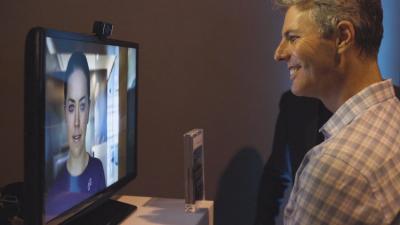Nov 21, 2017 - Soul Machines says the humanised AVA will enable customers to get answers to questions direct them to content and enable them to complete transactions. Soul Machines, a spinout from the University of Auckland Bioengineering Institute, is developing digital human interface to Autodesk’s customer assistance chatbot, the Autodesk Virtual Agent, AVA.
Soul Machines says the humanised AVA will enable customers to get answers to questions direct them to content and enable them to complete transactions.
“Soul Machines is advancing AVA’s capabilities, with a digital human face and persona that it literally brings AVA to life using [our] world leading Human Computing Engine (HCE),” the company said.
However to take full advantage of humanoid AVA, Autodesk customers wil need to turn on the video on the phone or computer so AVA can see them,
HCE is described as a virtual nervous system that combines neural networks and biologically inspired models of the human brain that will give AVA “the ability to see and hear as well as sensory systems that enable to recognise and respond emotionally in an incredibly human like way.”
Soul Machines’ CBO Greg Cross said: “Talking to one of our digital humans means you will get the same sort of social responses and non-verbal communication cues as if you were sitting face to face across a table from a real person. It means our customers can deliver highly personalised brand accretive experiences in a way they have not been able to afford to do up till now.”
CEO of Soul Machines Dr Mark Sagar said “[Ava] has a virtual nervous system and all kinds of sensory capabilities so she can respond to the user’s behaviour in real time to facilitate the communication.”
The move, announced Autodesk University, Autodesk’s annual conference in Las Vegas, follows Soul Machines’ announcement in March 2017 that it had developed for the Australian National Disability Insurance Scheme, an online virtual assistant for Australia’s disabled community who “can understand thousands of questions put to her in plain English and respond with clear and simple replies.”
Both Nadia and AVA have been developed from Soul Machines’ Baby-X, billed as “an intelligent, emotionally responsive virtual toddler” created by Sagar and his team in the Auckland Bioengineering Institute and which drew worldwide attention when it was released in 2013, leading to the launch of Soul Machines, in November 2016.
This
says that Air New Zealand is also looking at using Soul Machines’ virtual humans for customer service, and it shows just how human they are.| A ComputerWorld release || November 18, 2017 |||


